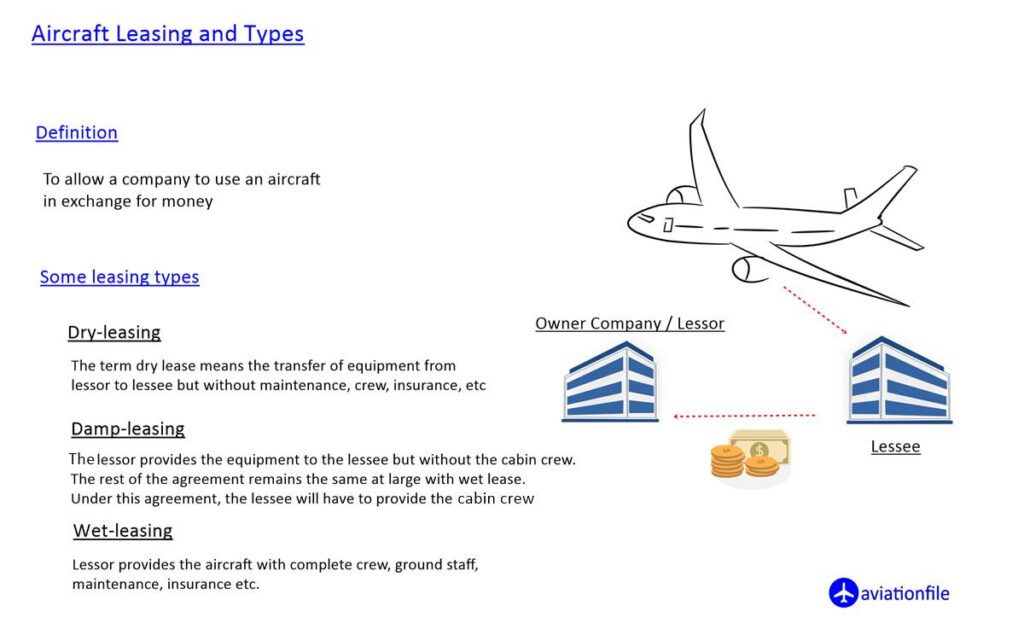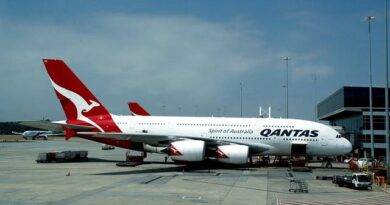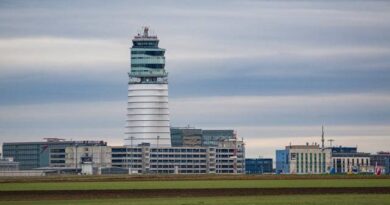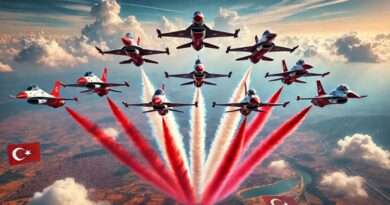Aircraft Leasing – Definition and Types
In this article, we will talk about what aircraft leasing is and why companies use the aircraft leasing method. We will also try to cover the types of aircraft leasing.
First of all, what is aircraft leasing? As you can see from the word “leasing”, leasing a plane is allowing a company (the lessee) to use the plane owned by another company (lesser) for money under certain terms and conditions. As it is understood from the definition, there are two parties in a plane leasing agreement and the plane(s)are in the middle. We can say that the lesser company is the owner of the plane and the lessee company is the operator of the plane under certain conditions.
Let’s continue with why airlines use the aircraft leasing method. Let’s have a look at the reasons why this method is preferred.
Some Reasons for Aircraft Leasing
– Insufficient financial sources: Sometimes, companies do not have the necessary financial resources for aircraft purchase. As you can imagine, commercial airplanes are very expensive and have a large share in the investment items of companies. Companies that do not have this financial power may want to continue their operations by leasing aircraft.
– Tax advantage: Leasing a plane can sometimes provide tax advantages to the lessee companies.
– Meeting urgent needs quickly: The airline industry is a rapidly changing and dynamic industry. Periodically, the demand for some routes may increase. Or the airline company may implement a policy to fill some of the gaps in the sector quickly. In such cases, leasing a plane can be a quick solution.
– Order Time: Aircraft manufacturing companies produce aircraft according to orders from companies. (even Boeing produces aircraft by giving a specific code of the company that ordered the aircraft). And often it may be necessary to wait a long time for an ordered aircraft. In such cases, renting a plane may be a suitable option.
We touched on the reasons for aircraft leasing, but it should not be forgotten that while leasing a plane is preferred by some companies, it is a method that some companies do not prefer. For example, if you are going to use a plane in your fleet for a very long time, purchasing a plane may be a better choice than leasing it.
Now let’s look at some of commonly used leasing methods.
Dry Leasing: It is a very common leasing method. It is a preferred method, especially in long-term rental agreements. In dry leasing method, the lesser company rents the aircraft empty. The lessee firm undertakes all operational expenses of the aircraft. It covers expenses such as crew, management and insurance.
Wet Leasing: This method is generally used in short-term lease agreements. The lesser firm leases the aircraft by undertaking all operational expenses. All cost items such as crew, insurance and maintenance belong to the lesser company.
Damp Leasing: We can say that the damp leasing is a method between dry leasing and wet leasing. Lessee, the company that leased the plane, provides the cabin crew itself and the remaining responsibilities belong to the Lesser firm.

It is possible to summarize the leasing methods, which is such a very detailed subject, as above.
As of 2020, we know that approximately 49% of 27 thousand commercial aircrafts, valued at nearly $ 700 billion, are on lease. Before the Covid19 pandemic, considering the suitors from China and India, it was expected that the rate of leased aircrafts would be around 55%. However, the Covid19 pandemic shook the airline industry deeply. The demand for the airline has decreased to minimum levels, and naturally, we can say that the demand for aircraft rental has now stopped.
On the other hand, we can say that the aircraft leasing method is highly preferred worldwide. And it is not difficult to predict that the demand for aircraft leasing will increase again with the recovery after the Covid19 pandemic.
IATA Covid19 PassengerRevenue risk report – Covid19 – 2020


